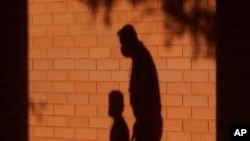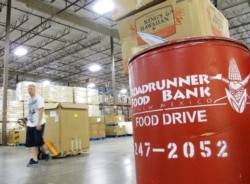The $1.9 trillion pandemic relief bill awaiting final passage in the House of Representatives would bring the United States in line with many other advanced democracies around the world by providing regular, unrestricted federal payments to families with children that would cut the rate of child poverty in half.
In all, 13.1 million children and adults would be lifted out of poverty, including 5.7 million under the age of 18, according to one analysis. It would be an historic byproduct of President Joe Biden's massive economic response to the COVID-19 pandemic and Democrats' pent-up demands for addressing income inequality in the U.S. through direct government action.
What remains to be seen is whether the change is temporary or signals a permanent adjustment to U.S. social policy.
Almost unprecedented
An analysis by the Urban-Brookings Tax Policy Center found that the bill would increase the after-tax income of the poorest quintile of Americans by 20.1% and the second-lowest quintile by 9.3%. (Those figures include a one-time federal payment of $1,400 for most Americans as well as elements tailored to benefit families and the poor.)
An analysis by the Center on Poverty and Social Policy at Columbia University found that the bill would cut the overall poverty rate in the United States from 12.3% to 8.2%. The impact on children under 18 would be even more dramatic, dropping their poverty rate from 13.5% to 5.7%.
Supporters of more generous government benefits for low-income Americans struggled to find a parallel in U.S. history.
"It's a huge change," said Sarah Halpern-Meekin, a professor in the LaFollette School of Public Affairs and the Department of Human Development and Family Studies at the University of Wisconsin–Madison. She said the nearest historical comparison in terms of impact on society would be the Social Security Act of 1935, which set up a system of guaranteed income for most retirees in America.
Details of legislation
In addition to direct stimulus payments and enhanced unemployment benefits, the American Rescue Plan Act of 2021 would create a refundable tax credit worth $3,600 per year for children under 6 years of age, and $3,000 for children between 6 and 18.
Beginning in July, the funds would be delivered in monthly payments, creating a predictable income stream for families. The bill would also expand existing tax credits to care for children and dependents.
A separate element of the bill, expanding federal benefits to low-income working households through a program known as the Earned Income Tax Credit, would further reduce poverty in the U.S.
Analysts say financial improvements can trigger other positive outcomes for struggling Americans and their families.
"With these kinds of increases in income there are concrete health benefits," said Halpern-Meekin, who is also affiliated with the Institute for Research on Poverty. "The family being less likely to experience material hardship and run short of what they need has a short-term effect on children's or infants' health outcomes, and those spill over into long term effects ... on health, school and employment outcomes."
Unintended consequences
While progressives celebrate the bill as a major victory, conservatives say they fear that providing regular, no-strings-attached income to parents will have unintended consequences that do more harm than good.
Scott Winship, the director of poverty studies at the American Enterprise Institute, released a research paper titled, "The Conservative Case Against Child Allowances" as lawmakers were debating the bill.
"Child allowances run a very real risk of encouraging more single parenthood and more no-worker families, both of which could worsen entrenched poverty in the long run — an overreliance on government transfers, poverty over longer stretches of childhood, intergenerational poverty, and geographically concentrated poverty," he wrote.
"And the concern is about not only material poverty but also the social poverty that comes from growing up in non-intact families or communities with limited social capital and a dearth of meaningful roles for members to fill."
Noting that the United States has already seen a significant decrease in child poverty in recent decades, Winship called on lawmakers to reject the bill and to instead continue with existing policies that, he said, have been proven to work.
"Policymakers should reject child allowances in favor of other policies to reduce child poverty that would build on the lessons of welfare reform, run lower risks of unintended consequences, address stubbornly low rates of intergenerational mobility, and attempt to reverse pervasive declines in family and associational life," he wrote. "They must resist the allure of a family policy that — only apparently — has no downsides."
Permanent or temporary?
As currently written, the changes to tax policy in the bill would expire at the end of the year.
However, even if law reverts to its current form next year, taxpayers can expect an additional infusion of cash in 2022, when the benefits for the first six months of this year are refunded to them after they file their 2021 taxes.
Advocates say that lifting children out of poverty, even temporarily, would have positive long-term effects on their development, but that the ideal outcome is creating a permanent child benefit similar to those offered in many European countries.
Those calling for a permanent child benefit, such as Indivar Dutta-Gupta, the co-executive director of the Center on Poverty and Inequality at Georgetown Law School, say they are optimistic that will be the ultimate result.
"By passing such a consequential provision for one year, a provision that is of historic magnitude, the president and those who have supported expanding the child tax credit are putting Congress in the position of either allowing that temporary provision to expire at the end of this year — and if they do, child poverty rates will roughly double on their watch because of a decision they're making — or they can find a way to extend the provision," he said.
Dutta-Gupta pointed out that scholars who study poverty have been advocating for a child benefit for years, not just as a response to the economic distress caused by the pandemic.
"This is a provision that will be useful throughout the business cycle," he said. "And there's every reason to expect a full-court press to make the provision expanding the child tax credit permanent before the end of this calendar year."





























